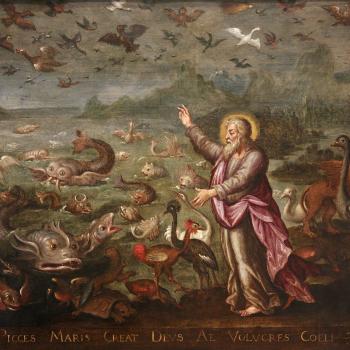By Colleen Deatsman
 Though shamanism is the oldest living path of spirituality and healing, many people have never heard of it, or don't understand what it is. Shamanism is not merely a practice or a set of methodologies: it is a way of living and being in the world that is rich in tradition, eclecticism, and mysticism. It is not a religion.
Though shamanism is the oldest living path of spirituality and healing, many people have never heard of it, or don't understand what it is. Shamanism is not merely a practice or a set of methodologies: it is a way of living and being in the world that is rich in tradition, eclecticism, and mysticism. It is not a religion.
Shamanism is not an ancient archaic art -- it is a living power path. It is currently alive in many countries where it often co-exists, blends with, and complements at least one religion, including the major world religions of Christianity, Buddhism, and Hinduism. It is practical, not dogmatic, nor does it have a specific set of rules to follow.
Shamanism is interactive, experiential, creative, and in constant dynamic change based on what works in each unique set of circumstances, not any particular protocol. Shamanism is based in animism. Animism is the understanding that all things are living and are a soul; trees, animals, this magazine, the chair you are sitting in, and you and I.
The term "shaman" has been adapted from the Tungus people of Siberia meaning "one who sees in the dark." This name denotes the ability of the shaman to "see" energy, but shamans not only see energy with their vision, they feel, sense, and experience energy using all aspects of their being -- physical, emotional, mental, energetic, and spiritual.
The work of the shaman is to harness the power of this energy for the benefit of themselves and the people, by acting as the bridge between the energy-based, Spirit Otherworlds and the physical middle world. Using techniques such as journeying, the shaman travels outside of space and time to seek information and harness energy for balance and wholeness for many benefits, including diagnosing and treating illness. They are often called "seers" or "knowers" because of this ability to journey into non-ordinary reality and experience information and energy first-hand.
Shamanism represents the most widespread and ancient methodological system of awareness and mind-body healing known to humanity. Shamans are the visionaries, healers, counselors, and psychologists of their communities. They are the medicine people that look out for the well-being of the entire tribe, clan, or community, as well as provide individual treatment. Studying shamanism and learning basic journeying techniques does not make one a shaman.
To become a shaman requires a deep, undeniable internal calling, intense self-exploration, initiations, and a lifetime dedication to study, training, apprenticing, experiencing, healing, and practicing. It is no easy undertaking and one that few ever consider. However, learning to use shamanic journeys and techniques for personal use is accessible and powerfully healing and enlightening for many people. We all have a natural ability to live from and express our soul-self and to connect with Spirit and the energy of the Otherworlds.
In shamanism there are three worlds: the middle world, the lower world, and the upper world. The middle world is the world in which we live that has both physical and spiritual aspects. It is both the ordinary and the non-ordinary worlds overlapped. It is the world of duality, balance, and integration.
The upper and lower worlds are places of power where we directly access guidance and empowerment. The lower and upper worlds are non-ordinary worlds that have nothing to do with heaven or hell. These spiritual worlds are referred to as the Otherworlds or spirit realms. These Otherworlds exist within and around all of us, just outside of our daily perceptions. They are the "places" that shamans and journeyers experience and can be accessed through portals, gateways, or tunnels.
Shamans consciously choose to live in two different worlds at the same time. They have one foot here in the everyday ordinary physical world and one foot in the non-ordinary Otherworlds. The fact is, we all live in these two different worlds, but are commonly not aware of the non-ordinary less visible one. The world that we are most aware of is the world of telephones, cars, airplanes, stress, work, taxiing children, paying bills, responsibilities, loves, hobbies, and worldly comforts. It is the world of our everyday life.
But there is another world that intermingles and overlaps the everyday world. This world does not exist in some other place, but is right beside us, just outside of our usual perceptions. Because we must hone our perceptions to connect with this subtle world, it seems separate, when in reality it is the undercurrent of the world that we are familiar with.




